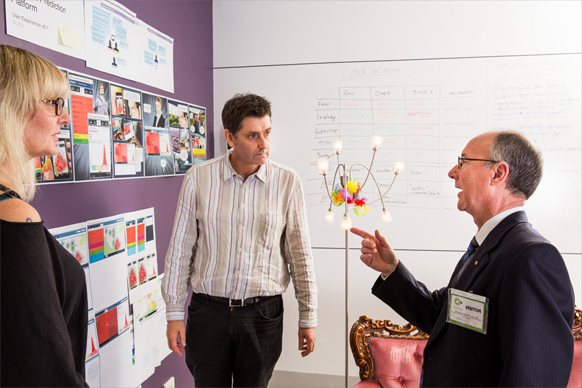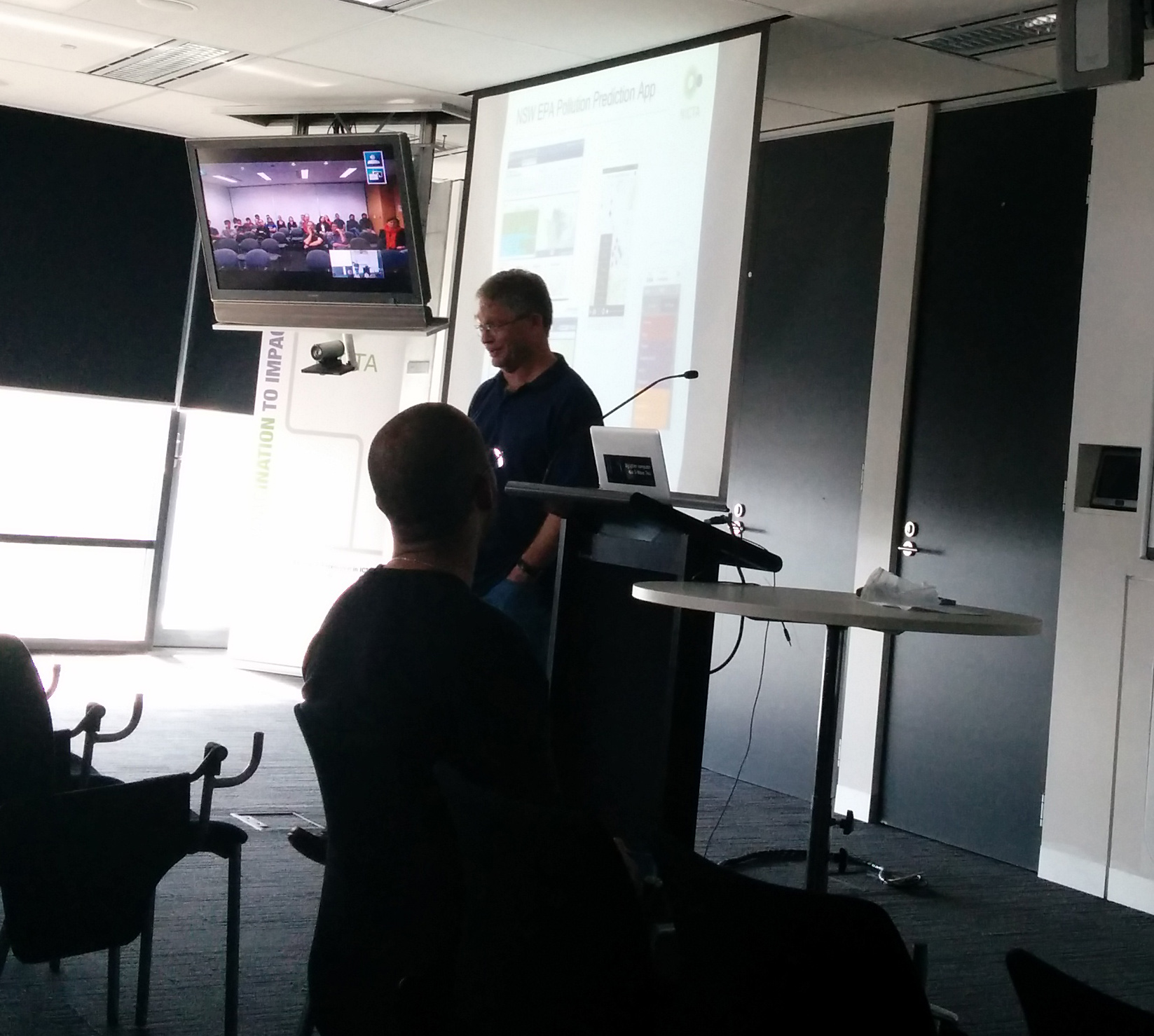I have been reflecting on the level of UX maturity within NICTA over the last couple of months. From inside it, it can be a bit hard and the unusual culture of NICTA makes it a bit hard to lock down, but the evidence is all around.
We now have 2 part time designers taking up the ever rising number of projects passing across my desk requiring help. Some are deep engagement and some are more small start-up style short bursts to help get a prototype out for validation.
At the ETD retreat last month, I proposed a separate design stream to run in parallel to the coding exercises… and we had a 13 engineers jump ship to join us!

Projects are engaging me at much earlier points so there is time for considerations of the workflows, organisation cultures within the industry, exposure to the raw data, platform explorations and efforts dedicated to problem definition rather than requesting help when a presentation layer is needed to help sell an idea.
At CeBIT several of projects that I was involved in were on display (see previous post) and such a highly public place with a high turn over of interested people is a great way to catch instant feedback.
We regularly host VIP visits from government, especially at the moment with the funding conversations happening. Each visit has a stop by the design space for a quick presentation of user experience work going into our work and how that makes impact into industry. Each guest, which over time has included both federal and state senior ministers and advisors has been deeply interested in the work we do in consideration with customers, audiences and clients. They ask a lot of great questions and really appreciate the information we have presented.

In project meetings, I not only hear engineers and academics discuss “users” but also challenge each other on which “users” in particular. And I don’t even bother posting up persona’s anymore to help them!
And today, our CEO mentioned UX specifically in the all hands, with an example of how it has contributed to the Air Quality Prediction Service project, currently going out to market for validation and interest. When the CEO singles it out for special mention, it’s is clear that UX is understood as tool for strategic engagement.

So where we sit on any maturity measure is difficult really say, but it’s most likely midway between superficial and reactive to fully integrated and strategic. Unlike most other companies, NICTA isn’t in the business of creating a suite of products and services which benefit from a unified approach. But we definitely work towards a level of quality and have the very real potential of creating change at an industry level through well considered user experience product design. And this is most definitely achieved by a shared mindset which is clearly emerging within the company.
I am really pleased about the efforts I have worked hard at for the two or so years. Building credibility by providing what teams think they need while gently adding in what I have identified as needs for users; education and skills workshops, regular presentations of successes and well placed, highly visual communication devices (posters and the like) have all produced a shift that I am really proud of.
Maturity refs:
http://uxmag.com/articles/how-mature-is-your-organization-when-it-comes-to-ux
http://www.uxmatters.com/mt/archives/2013/12/applied-ux-strategy-part-1-maturity-models.php





